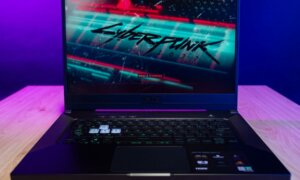Can OnePlus’ popularity win them a spot in gamers’ hearts? And is the OnePlus 9RT a threat to a gaming legend like Black Shark 4S? Let’s find out!
OnePlus 9RT: A… Gaming Phone?
If you’re wondering why I’m pitching a OnePlus phone against a BlackShark handset, you should know this may be the first handset seriously thrown at gamers from the company.
And that’s great! Competition is always good, forcing rivals to take the hard path, no cutting corners. But OnePlus did make its job harder when it decided to launch its brand new phone on the exact same day as Black Shark. If you didn’t know, the OnePlus 9RT and Black Shark 4S will be unveiled this October 13.
Between the two, what is the phone that will do the job? And which of them will leave you hanging?
Both phones seem pretty similar at first glance, and that’s because OnePlus knows pretty well what mobile gamers need and what recipe gaming phones follow.
OnePlus 9RT vs Black Shark 4S: Touch Sampling Rate, Refresh Rate
Right out of the bat, OnePlus made sure the improved touch sampling rate would be a conversation starter. The company got out of its way to highlight the 600Hz touch sampling rate – a record for an OnePlus phone.
Why is that so important? Well, the touch sampling rate refers to the time gap between a tap on the phone’s screen and the corresponding action of that tap. Basically, it shows how long it takes a device to react to the command you’ve given to it. Obviously, that’s crucial when you’re in a shooter or a car chase.
The higher the number, the “faster” or more responsive the phone. And it doesn’t end here. Here’s the reason why everyone’s working on offering outstanding refresh rates lately: a phone can be fast to react but without a high refresh rate, the user won’t be able to see that reaction in due time.
As in, the screen won’t refresh quick enough to make that change visible.
OnePlus says they’ve managed to improve the click delay by 57% after they’ve worked closely with an eSports team.That touch sampling rate is coupled with a 120Hz refresh rate on a 6.55 inch display.
Is that enough to surpass Black Shark 4S? Not quite. At least on paper, Black Shark is faster, with a 720Hz touch sampling rate! And it is paired with a 144Hz refresh rate, something we’ve also seen only on high end devices.
In other words, OnePlus 9RT may be a huge leap forward from its predecessor but it remains behind the Black Shark 4S.
OnePlus 9RT: Cooling System, Snapdragon Processor
To sweeten the deal, OnePlus did throw in a better cooling system. I’m talking about a five-layer structure that, to their credit, actually covers almost the entire phone.
However, that is no novelty. In fact, cooling system have been a central part of gaming phones for a while now, because sooner or later all that intense processing will heat up a phone.
Speaking about processing, how do 9RT and 4S handle most tasks? With a Snapdragon chip, of course. And while both went for the best money can buy, the BlackShark one does have an extra edge. The 4S Pro processor is the 888 Plus version which makes this handset better than even the 4 Pro.
So far, most points – if not all – go to… BlackShark!
OnePlus 9RT vs Black Shark 4S: Memory, Camera, Shoulder Triggers
Spec-wise, it’s pretty hard to beat this shark. BlackShark 4S Pro is expected to come with 16GB of RAM and 512GB of storage, plus a triple camera led by a 64MP main with an ultra-wide and macro in tow.
Don’t know how much gamers will push that shutter button but they’ll definitely need the shoulder triggers and… good news, those are back! The only unexpected feature from BlackShark 4S is the new screen mode for… reading, apparently? We’ll have to look into that.
OnePlus 9RT will struggle to catch up with a 50MP primary camera, a 4,500mAh battery with an admittedly attractive 65W charging.
Honestly, specs give us an idea of what a phone is capable of doing. It’s a whole different thing when you have it in your hands. If OnePlus can optimize the entire system to work seamlessly, offer a hard-to-beat camera and bring it to the global scene… well, then the odds might be more in their favor.
Follow TechTheLead on Google News to get the news first.






















